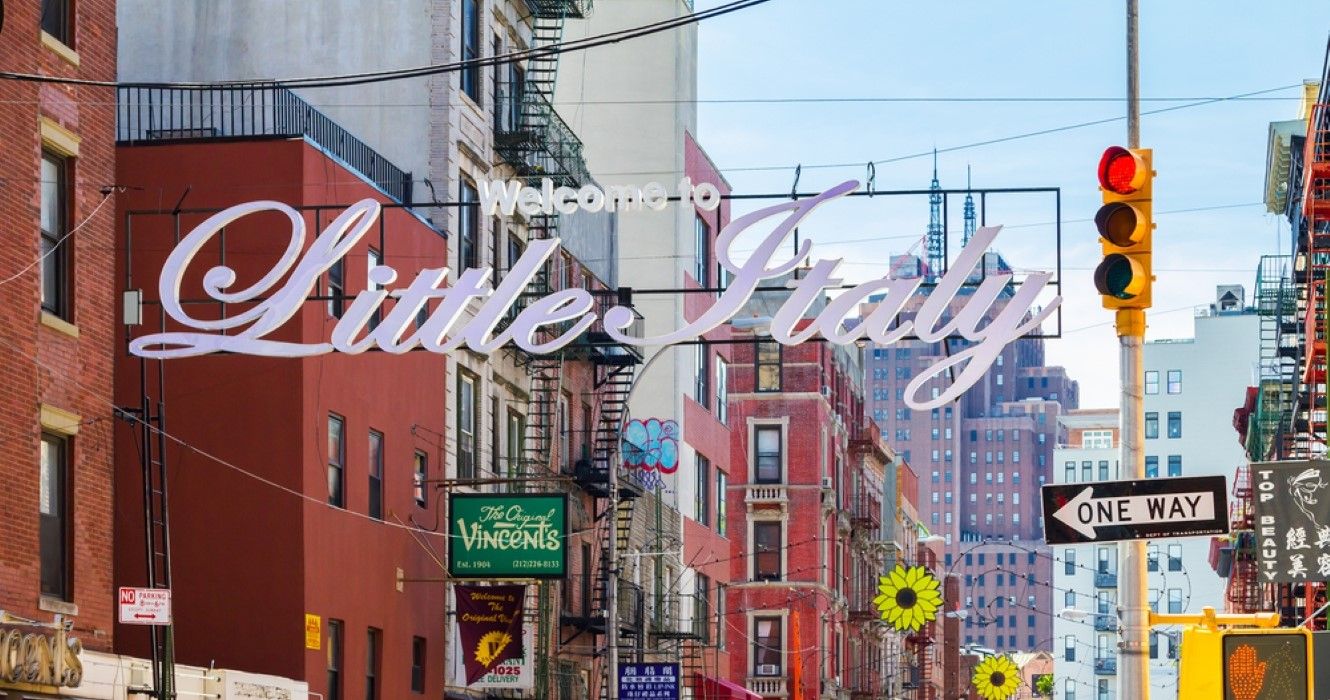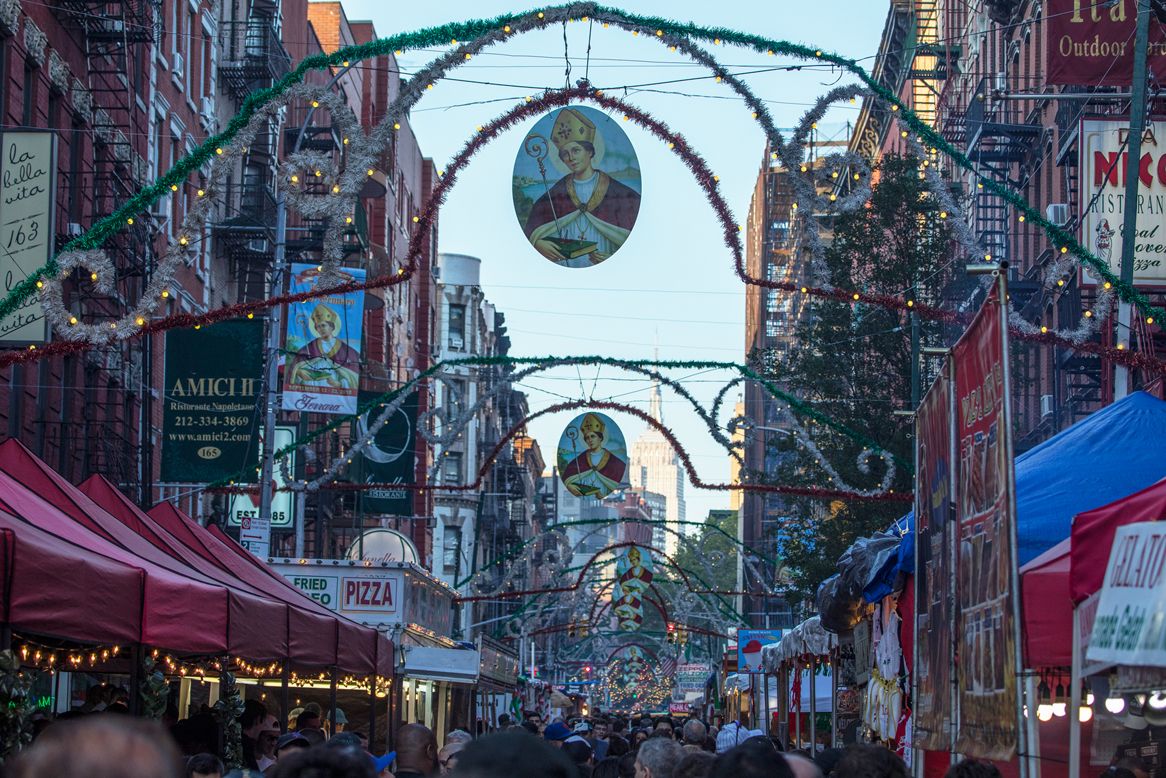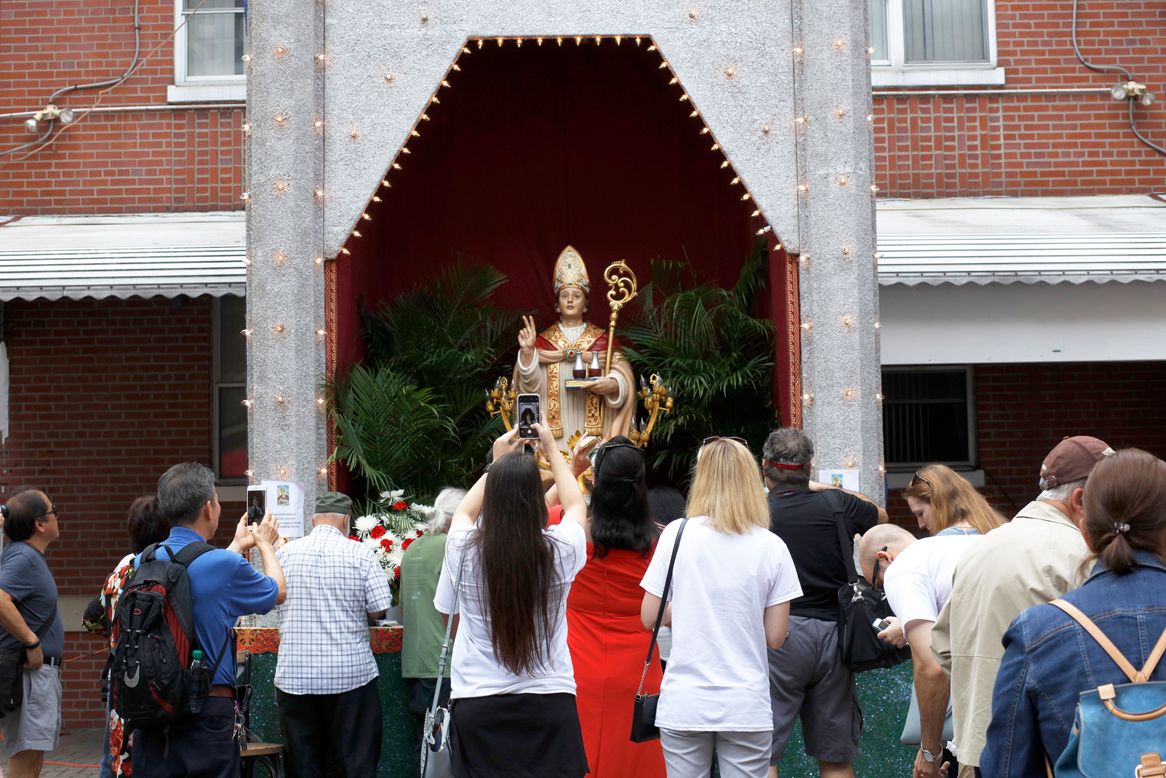Quick Links
New York City’s Little Italy is often seen as a tourist destination for buying a bakery box of cannoli or seeing waiters beckoning to passersby outside old-school red sauce joints. However, in Little Italy, visitors can still find places to eat well, shop for Italian delicacies, and learn more about this neighborhood’s legacy.
The History Of New York City’s Little Italy
Little Italy’s origins come from a wave of Italian immigrants who came to New York City in the mid-19th and early 20th centuries, with many settling in this region of Manhattan and forming band-knit communities. With Italians later on going to live in other Italian enclaves in New York, and the expansion of Chinatown, Little Italy has shrunk in size over the years. Today its scope is concentrated mainly along Mulberry Street.
The Feast of San Gennaro
Every September, Little Italy attracts crowds for The Feast of San Gennaro, an 11-day festival that is named for and honors the patron saint of Naples, whose name is Januarius or more so known in Italian as San Gennaro. According to the festival’s website, the festival originated in 1926 with Neapolitan immigrants keeping their Old World tradition of honoring San Gennaro by holding a block party.
The Feast of San Gennaro livens up Little Italy with rows of vendor stalls selling Italian foods, including arancini, fried calamari, zeppoli; restaurants remain open but can fill up quickly with customers.
The event’s schedule includes a grand procession featuring floats, city officials, and members of Italian heritage organizations; a statue of San Gennaro is also paraded. There are competitive eating contests involving cannoli, pizza, and meatballs. During the entire festival, Little Italy's restaurants remain open for business but can fill up quickly with customers.
What to See In Little Italy
The Italian American Museum is scheduled to reopen in the spring of 2023 as a treasure trove on the history and culture of Italian Americans and their contributions to the United States. Visit their website for updates.
The Church of the Most Precious Blood is the National Shrine of the Church of San Gennaro and holds the statue of Saint Januarius that is used during the Feast of San Gennaro. It is also a sister church to the Basilica of St. Patrick’s Old Cathedral in the Manhattan neighborhood of Nolita, which is nearby Little Italy and has some Italian history as well. Please note that the Church of the Most Precious Blood is still an active house of worship, so be respectful upon entering.
Where To Eat And Shop In Little Italy
IL Cortile has been around since 1975 and features an extensive a la carte menu and fine imported and domestic wines and cocktails in a beautiful multi-room venue. Orders are served by professional old school waiters, and there’s also a nice garden atrium. Da Nico also has an outdoor garden, and this restaurant has been in business in Little Italy since 1993; their brick oven pizzas are a must order item.
Puglia has been in Manhattan’s Little Italy for over a century. It was founded by patriarch Gregorio Garofalo who came over to the States in 1919 and started in a basement in what would become his still family-owned restaurant. Puglia is named after the Southern Italian region from which Garofalo emigrated from.
Opening its first location in Little Italy in 2011, Parm has expanded to other parts of NYC but its founders, Michelin-Starred chefs Mario Carbone and Rich Torrisi, keep this place going based on their take on what’s referred to as Italian American soul cooking. Order their chicken parm and meatballs.
Manero's of Mulberry has a fun disco theme. The name of this family-style Italian restaurant is derived from “Tony Manero,” the leading male played by John Travolta in the film, “Saturday Night Live.” The food is done Italian family style, with pizzas, pasta, and starters such as beef or meatless mushroom meatballs to pass around the table.
Umbertos Clam House was opened in 1972 by Umberto Ianniello due to his feeling that there were only a few seafood restaurants within the neighborhood. The restaurant, first located at 129 Mulberry Street, gained a bit of notoriety shortly after its opening. That same year, New York gangster Joe Gallo was shot and killed while dining at Umberto's by rivals. Today, Umbertos is a few doors down from its first location, now at 132 Mulberry St. Mafia history buffs and hungry diners will enjoy a seafood and non-seafood menu selection with picks like the Lobster Fra Diavolo.
While technically in Nolita, Lombardi's is one street over Mulberry. However, it is also a big deal in NYC's food history. It has the recognition of being the first pizzeria in America, established in 1905. Choose from their Margherita pizza and other classic combinations, or if possible get one, their clam pie.
Now, let’s get on to Italian desserts. Ferrara Bakery dates back to 1892 and remains a popular bakery and cafe for getting Italian pastries or sitting in and ordering one with a coffee. Caffé Palermo has a sign that’s inscribed with the wording, “the King of Cannoli” - a self-appointed nod to their proprietor - but the cannoli are regal. Or order a slice of their cheesecake.
Do some Italian food shopping while in Little Italy. Alleva Dairy, which is said to be the oldest cheese shop in America, is great for getting mozzarella and ricotta. Di Palo's Fine Foods is also a spot for picking up cheeses, wines, and other Italian staples. So go to Manhattan's Little Italy with a hearty appetite!



